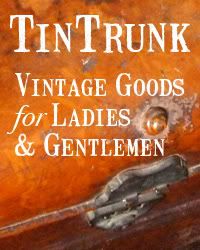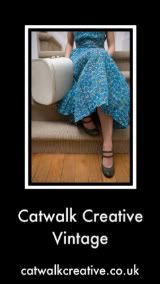
Corinne Griffiths in Outcast, 1928, originally uploaded by Trevira.
This post is a bit of a cheat because I haven't written it. It is an article transcribed from an issue of Picturegoer magazine from August 1926 (found while researching at the excellent Bill Douglas Centre for the History of Cinema and Popular Culture), which explores the growing influence of Hollywood on women's fashions.
There's little mention of costume designers, apart from Cora McGeachy and "the well-known New York costumier" Madame Frances.
Cora McGeachy suffers the indignity of being called "Cora MacCreachy" on IMDB, and is credited with only one film, Irene, which is discussed in the article below (incidentally, Irene is available on DVD at Grapevine Video). BroadwayWorld.com supplies another credit: she was the costume designer of the Ziegfeld Follies of 1923 (Summer edition) on Broadway.
Madame Frances apparently employed the young Travis Banton who went on to great things at Paramount.
Hollywood costume designers really hit their stride in the 1930s, with designers such as the aforementioned Travis Banton, Howard Greer and Adrian not just following Paris' lead but creating and launching their own trends.
Indeed, it was necessary for costume designers to create their own fashions, in a sense, since the amount of time involved in film production meant that if they tried to conform too closely to current styles there was the ever-present danger that by the time of release the costumes would be hopelessly out of date. Not to mention the extended period that films might be shown on the circuit - according to this article this was "roughly three years."
So this article is an interesting snapshot of a time when Hollywood still deferred to Parisian authority with regard to fashions - there's mention of the director Frank Tuttle having costumes sent from Paris - but was growing in confidence in its ability to create glamorous costumes of its own. Please enjoy Josie P. Lederer's entertaining report on film fashions in 1926. (I've added links to more information whenever possible, and my comments are in square brackets).
Josie P. Lederer, "Clothes make the film"
For the very latest modes see the movies; they’re nearer than Paris – and cheaper.
As long as there are women in the world, and in the picture theatres, just so long will the title of this article hold good.
For women form the majority of film patrons, and for them and because of them the fashion film was invented. Ever since The Dressmaker from Paris featured a mannequin parade, and registered a great success, every producing company in the U.S.A. has seen fit to make similar specimens.
There is no reason why they shouldn’t. These fashion films fill a very definite want on the part of Mrs. And Miss Suburbia, who go to the movies instead of to Paris to see the latest thing in gowns.
There are over a dozen of these films due for release within the next three months and they are all sure to delight film fans.
The stars, however, are not wildly enthusiastic over them.
Naturally they like the idea of wearing pretty and sumptuous clothes. But, even when they know they are capable of wearing them well, they feel a tiny bit aggrieved at the thought of the success or failure of the film depending, not upon themselves, their director, or their acting, but upon that hitherto unknown quantity, the dress designer.
It is not a question of dollars alone. Battles wage between the great companies, and the bone of contention is the cleverest and most original sartorial specialist. The object is to secure his or her exclusive services.
That is what occurred in Irene, a film famous for presenting the first fashion parade photographed in natural colours – a charming idea beautifully carried out.
In Cora McGeachy, Colleen Moore vows she has found somebody to whom the commonplace is anathema, and who designs clothes which fit the personality of the wearers as well as the spirit of the story.
The Irene creations are certainly lovely, from Dame Fashion herself, who introduces the parade, to the various fancy costumes depicting “The Seasons,” and the girls dressed as water lilies, who inhabit the ornamental lake which forms part of the setting.
Colleen Moore’s prettiest is a palest green confection trimmed with row upon row of ostrich feathers, and topped by a large gauze hat with a crown composed entirely of tiny pink roses.
She also wears a striking cigar-brown walking costume; from one of the huge fur-edged sleeves of which peeps the head of a live puppy. The rest of him reposes in a pocket in the cuff specially made for that purpose.
Paramount’s Mannequin, despite its title, has no wonderful fashion parade, but features Dolores Costello and one of the prettiest garden party frocks extant. Picturegoers with imitative minds and clever fingers will doubtless rush home to make one exactly like it.
It is composed of very fine, hand-painted lawn, and its most striking feature is a huge flat bow of black velvet ribbon at the left side of the low waist, held in place by the diamond arrow which plays so dramatic a part in the story.
Though Mannequin belies the promise of its title, The American Venus, presented by the same company, is little else but a beauty and fashion show. Frank Tuttle, its director, sent to Paris for the costumes, and all the newest and smartest ideas in street and ballroom attire are seen, as well as the snappiest of bathing beauties and bathing dresses.
Louise Brooks, in particular, wears some styles well worth noting, and Dorothy Matthews and Ruth Baren are easily first in the fashion show itself.
Every Gloria Swanson picture is a fashion picture, for the star’s clothes made her reputation and many look to them to support it.
Gloria’s gowns, however, are not for the million. She spends more upon them than any other star; her bills aggregate over 125,000 dollars per annum for film clothes alone.
Then there are her film jewels, which are usually hired at about ten per cent of their actual cost. She wears some 25 pairs of shoes in a picture, and her off screen wardrobe contains nearly fifty walking dresses alone, and over two hundred hats.
The second-best-dressed star is probably Corinne Griffith [featured in the photo above], and she has tried to beat her own record in Mlle. Modiste. After personally combing New York for clothes for this film, she and Madame Frances (the well-known New York costumier), put their heads together and evolved a dazzling wardrobe.
Mlle. Modiste’s hats were made especially for her by Peggy Hoyt, and Corinne spent three days matching up shoes, sandals and evening slippers to her gowns.
The forty gowns Constance Talmadge is to wear for her new crook comedy [this might be Venus of Venice] will prove a potent incentive to fashion fiends to go and see the picture.
And although the dresses in Natacha Rambova’s When Love Grows Cold are outlandish in the extreme, they contain some striking and easily modified ideas, and are worth the admission money. They are very different from Natacha’s ordinary attire, which is striking but severe, and for which Poiret is usually responsible.
Jetta Goudal goes down in movie history as the girl to introduce bouffant gowns into Cecil De Mille productions. That worthy’s heroines had, until the advent of Jetta, been slinky of outline, but “la Goudal” is nothing if not individualistic in her attire.
Interesting facts concerning film favourites can be learned from the studio costumiers who design, fit, and make the film frocks and frills that magnetise so many feminine fans into kinemas.
Most studio designers are agreed that Anna Q. Nilsson, though she is one of the tall stars of filmland, is also so perfectly proportioned that any and every style becomes her.
She can wear hoops or hobble-skirts equally well. The long, flowing gowns and picture hats she affects in the opening reels of The Greater Glory are a complete contrast to the skin-tight clothes she dons later on in the story.
She looks as well in sporting attire as she does in period garb, and made an excellent boy in Ponjola and Miss Nobody.
Norma Shearer, Constance Bennett and Dorothy Mackaill would seem to be the young girl’s ideal fashion models.
Constance Bennett has a natural flair for costumes, and the simplest frock, worn as she wears it looks wonderful.
Norma Shearer concentrates very seriously upon her clothes, because her mail tells her how many girls look to her to show them Dame Fashion’s latest whim.
Dorothy Mackaill is a feminine Lon Chaney in that she loses her own personality directly she dons the clothes of the film character she is creating.
She has a slender, graceful figure, and many of her Chickie and Joanna gowns were eagerly copied by youngsters of her type all over the world.
Fashions come and go so rapidly that it takes an expert to decide what is and what is not a filmable gown.
The life of a big screenplay is, roughly, three years, so that anything that might “date” too definitely must be ruthlessly discarded.
The Fashion picture’s life must, necessarily, be shorter than this, but even then, it justifies its existence, as well as the thousands of dollars spent upon its costumes.
For in the eyes of four-fifths of those who sit in kinemas, clothes, without a doubt do make the film.
-----------------------
I must end with a link to a great article from one of TinTrunk's favourite blogs, The Bioscope, which addresses the subject of fashion on film in the silent era: Catwalks and pavements.






4 comments:
Stunning photo, would love to see the film - have you?
Hi Miss P! No, I haven't seen the film but its reportedly a bit of a stinker (not that we would mind, I'm sure - we'd be oohing and ahhing over the costumes)!
Aren't those little ankle socks great?
And it looks like the post went out before I added a little bit of writing . . .
Do check back for the full story if you can.
How interesting! And thanks for the link to the article on Peggy Hoyt. She advertised heavily in Vogue and Bazar in the 1920s. I've often wondered about her.
I had to laugh at the reference to the live puppy in the cuff! And to think that those famous-for-being-famous girls thought they invented the dog as accessory!
Thanks Lizzie. I had to resist discussing the article in detail, or I'd still be writing it now!
I'd never heard of Peggy Hoyt, but she was clearly a major figure in New York fashion. Wouldn't you just love to leaf through her sketchbooks at the NY Public Library?
I have the DVD of Irene but its a while since I watched it. Possibly the puppy was there for comic effect, but yes it does prove that there's nothing new under the sun! I'm going to have to watch it again now (no hardship, its a charming comedy and Colleen Moore is fantastic) and look out for him.
Post a Comment